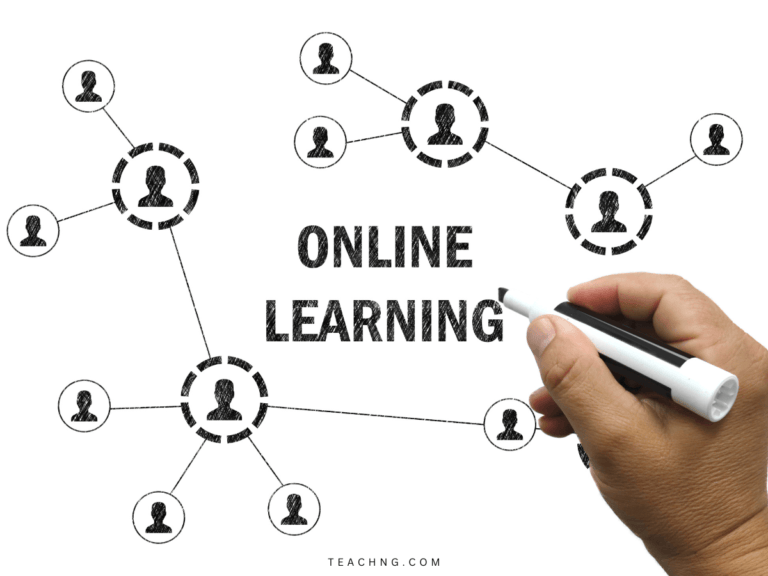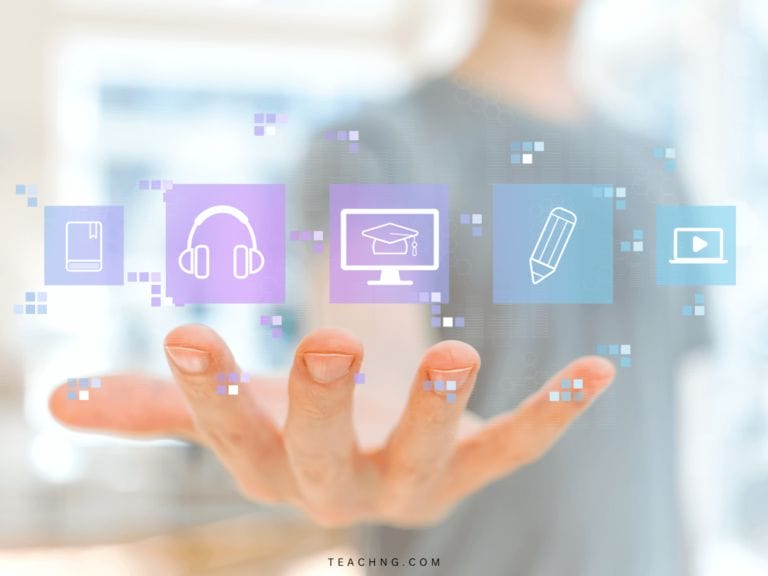Microlearning, with its bite-sized lessons and laser-focused content offers means for online education and business to stay ahead of the curve and offering effective and specific learning anywhere, anytime.
Adopting the best practices of microlearning can help empowering you to create engaging, effective, and memorable training programs and unleash its full potential.
KEY TAKEAWAYS
- Microlearning is all about delivering bite-sized, focused content to learners. It should be engaging, address specific pain points, and be kept short, typically be less than 10 minutes to maintain learner engagement.
- Personalization and interactivity that cater to individual learner needs through elements like gamification and social learning significantly enhance the microlearning experience.
- Effective platform selection is essential for creating engaging and effective microlearning contents and courses. Consider scalability, ease of use, mobile-friendliness, content creation tools, analytics, interactivity features, security, customization options, integration capabilities, and pricing.
Why You Need to Learn About Best Practices for Microlearning?
Microlearning is more than just compact lessons; it’s about catering to specific knowledge gaps and learner needs.
To harness the true potential of microlearning, you need to be creative in how you design your microlearning content. It’s not just about being brief; it’s about being brilliant.
Adopting the best practices for microlearning means to understand the concept of forgetting curve and use it to help your learners learn faster, better and easier.

Best Practices of Microlearning Course and Content Design
Microlearning program can help you reach your learning objective faster, however, effective microlearning strategy all follows a certain set of best practices for creating microlearning learning content and learning materials.
By following these best practices to design your microlearning training will ensure that your microlearning content is not only informative but also highly effective.
1. “Build it, and they will come.”
Creating a searchable resource library is essential. Structuring your microlearning content into categories makes navigation a breeze for learners. This ensures that they can easily access the specific content they need, improving their overall learning experience.
2. “Focus your content around quick fixes to known pain points.”
Addressing specific knowledge gaps and common pain points is what microlearning does best. Identify the frustrating knowledge gaps that learners want quick solutions for and tailor your content accordingly.
3. “Keep it short.”
The hallmark of microlearning is brevity. Aim for content that falls within the 2 to 6-minute range. This duration aligns with the average learner’s attention span and ensures engagement.
4. “Integrate microlearning seamlessly into everyday activities.”
To enhance accessibility and user experience, embed content launch links within commonly used workplace applications. This integration makes microlearning a natural part of your daily work routine.
5. “Personalize content where possible.”
One-size-fits-all doesn’t work in microlearning. Personalization is key. Tailor content to an individual learner’s current competency level, assessment scores, previous courses, and more.
6. “Make it enjoyable.”
Dry topics can be brought to life with humor and levity. Injecting fun into your microlearning content makes it more compelling and enjoyable, thereby increasing learner engagement.
7. “Make it social.”
Microlearning doesn’t have to be a solitary activity. Encourage social interaction by adding chat rooms, discussion forums, and Q&A boards to make microlearning a highly social event.
8. “Gamify your microlearning journey.”
Gamification can be a powerful motivator for learners. Rewarding them with badges or creating public leaderboards based on their level of learning activity adds a competitive and engaging element to microlearning.
9. “Make use of video where appropriate.”
Videos are an excellent medium for engaging content delivery. They are one of the most compelling forms of content consumption and can significantly increase learner engagement.
10. “The car is your new classroom.”
Leverage the commuting time by developing podcast versions of your microlearning content. Mobile learners can access these during their morning and evening commutes.
11. “The quality of elearning content must be exceptionally high.”
In a world with high-quality content on platforms like YouTube, Quora, and Bitly, your microlearning content should meet the same quality standards. High-quality content keeps learners engaged.
12. “Ensure offline access to content.”
To maximize accessibility, provide offline access to your content. This allows mobile microlearners to continue their learning even in areas with no internet signal.
13. “Adopt a lean mentality when producing content.”
Focus on what learners need to know. Avoid information overload by providing content that directly addresses their needs.
14. “Build a clear roadmap of learning.”
Planning out subject areas and addressing learner pain points helps create a structured and engaging learning path.
15. “Include online assessments.”
Assessments allow learners to gauge their progress. Make these assessments short and optional, allowing time-pressured learners to skip them if needed.
16. “Keep it real.”
Focus your microlearning modules on real-life working tasks to ensure maximum relevance. This boosts learner engagement as learners can immediately apply what they’ve learned.
17. “Understand your target audience.”
Conduct a training needs analysis to identify individual and company-wide skill gaps and pain points. This ensures your content is irresistible and tailored to your audience’s needs.
18. “Ensure a clear visual design strategy.”
Microlearning content should be accessible on various devices with different screen sizes, operating systems, processing power, and bandwidth. Your content should be optimized for these constraints.
19. “Use scheduled learning.”
Scheduled learning involves pushing learning nuggets to learners at regular intervals. This keeps learners engaged and creates a sense of anticipation for the next microlearning module.
Benefits of Microlearning
Using microlearning for learning and development offers many benefits and can transform your approach to corporate training and employee development, make learning enjoyable. Here are some key benefits microlearning offers:
1. Prevent Cognitive Overload
Microlearning prevents cognitive overload by delivering small, digestible pieces of information. It aligns with the capacity of our working memory, ensuring better retention.
2. Customizable
Each microlearning course can be tailored to individual learning preferences, allowing learners to choose the format that suits them best.
3. Saves Time and Money
Microlearning reduces training costs and saves time, as it often relies on in-house resources. Employees can focus on performance and skill gaps within their workplace.
Make Microlearning Work for Your Company
Translating “micro” as small might sound unimpressive, but research shows the effectiveness of microlearning in revolutionizing learning cultures.
A mobile app that delivers engaging content directly to learners’ mobile phones creates a highly effective learning experience.
This microlearning approach can encompass text, images, audio, documents, and even video, making it versatile and engaging.
Microlearning Examples
To make things clearer, let take a look at some of the most common examples of microlearning.
1. Microcopies
These are highly contextual yet easy-to-digest messages that help users learn, including error messages and hints.
2. Microlearning Videos
Short, specific videos with interactive content that promote better memory retention and longer attention spans, such as explainer videos, short videos that are less than 3 minutes long and interactive videos.
3. Microlearning Apps
Mobile apps that offer readily available microlearning modules, allowing learners to study at their own pace.
Learning on the mobile device offers learners the option to access bite-size training content and just-in-time learning.
4. Micro-Challenges
Micro-games that encourage participation, promoting independent research and knowledge retention.
These includes challenges such as, quiz, assignments and exams.
5. Infographics
Bite-sized courses and visual representations of key points and relevant information that enhance learning in a short period.
6. Social Media
Microlearning tools that offer nuggets of information and online communities for supplementary learning.
Platforms like Twitter and LinkedIn can be used to deliver microlearning content and foster online communities.
Microlearning Courses Examples in The Real World
There are many examples on how microlearning is being used in the real world, and here are some of the most common ways on how microlearning is used for eLearning.
- Product Training: Ensuring that all employees across the globe have access to information about new or updated products.
- Onboarding Staff: Making new hires feel like part of the company even before they officially start.
- Health and Safety Training: Addressing or preventing potential workplace issues to create a healthy working environment.
- Sales Training: Training staff on what they can and cannot say to customers, providing flexibility and accessibility.
Choosing The Best Microlearning Platforms
Top learning management system (LMS) offers you the ability to create engaging microlearning content and learning modules for personalized learning.
However, it is important that you should choose the best microlearning platform to get started as it will determine the features, you are given, and the microlearning learning experience that your learners will have during the online learning.
To select the best microlearning platforms, here are some things to look for:
- Scalability: Ensure the platform can accommodate your organization’s growth. It should be able to handle an increasing number of users and growing content libraries.
- Ease of Use: The platform should be user-friendly, both from an administrator’s perspective and for the learners. It should be easy to upload, organize, and distribute microlearning content.
- Mobile-Friendly: As microlearning often caters to on-the-go learners, the platform must be mobile-responsive. It should provide a seamless experience on various devices.
- Content Creation and Management: Look for platforms that offer user-friendly content creation tools. This includes the ability to create diverse microlearning formats like videos, quizzes, and infographics. Additionally, consider content management features to keep your content organized.
- Analytics and Reporting: A robust analytics and reporting system is vital to track learner progress, engagement, and the effectiveness of your microlearning content. Choose a platform that provides detailed insights into user behavior.
- Interactivity: Microlearning is most effective when it engages learners. A platform that supports interactivity through features like gamification, discussion forums, and social learning can significantly enhance the learning experience.
- Security: Ensure the platform meets your organization’s security standards. This includes data protection, user access control, and secure data storage.
- Customization: The ability to tailor the platform to your organization’s branding and unique needs is a significant advantage. Look for platforms that offer customization options.
- Integration Capabilities: Consider how well the platform integrates with your existing systems, such as your learning management system (LMS) or other tools. Seamless integration can streamline the learning experience for both administrators and learners.
- Pricing and Support: Finally, assess the cost of the platform and the level of customer support provided. Choose a platform that aligns with your budget and offers responsive support for any issues or questions that may arise.
And if you are still unsure, check out our other article where we’ve tried and tested numerous platforms to handpick the best ones designed for course creators offering both microlearning and macro learning options.
With the right tools, you can easily create microlearning content and offer effective training where your learners will be able to access your course anywhere.
Applying Best Practices For Creating Microlearning Training
Microlearning is the key to enhancing engagement and learning outcomes in online education and business.
By implementing the best practices you’ll create effective microlearning that can help you get a positive learning outcome and create an amazing microlearning experience for your learners.
Embrace microlearning and witness the transformation it brings to your online courses and business training.
How useful was this post?
Click on a star to rate it!
We are sorry that this post was not useful for you!
Let us improve this post!
Tell us how we can improve this post?





